The Lost Daughter Read online
Page 7
Her father’s office was at the back of the house, and it was his inner sanctum, the place where he kept all his personal items, many of them brought from Russia. She pushed the door wide and surveyed the gloom. If she were going to find a clue to her mother’s fate, it would be in the wooden desk her father had always kept locked. After her mom disappeared, Val had snuck in there many times to hunt for the key, checking behind the gold-painted icons in the shrine in one corner, and under the leather-bound tomes on the bookshelves, but she had never found it.
She tried the drawers now: locked, as always. She ran downstairs to the tool closet and selected a hammer and chisel. Back in her father’s office, she got to work, hammering the chisel blade into the top right-hand drawer first. The elderly wood splintered easily and she was able to yank the drawer open, but inside there were only some pencils, mathematical instruments, and bottles of ink. She had hoped for an address book with a forwarding address for her mother, or a copy of her parents’ divorce certificate, but there was nothing like that.
When she prised open the top left-hand drawer, she gasped at what she saw inside: the unmistakable shape of a pistol wrapped in a white cloth. She sat down on her father’s revolving chair before unwrapping it. The barrel was dull black metal and it had a brown handle with a honeycombed grip, a chamber with space for six cartridges, a cocking hammer, and trigger: it was an ugly weapon, nothing elegant about it. Some bullets rolled around the drawer. Why had he owned a pistol?
Suddenly she wondered if he had shot her mother and buried her in the garden. Was that why there had been “so much blood”? Should she get the police to dig it up?
She shook herself. That was ridiculous. There was no evidence. Finding an old pistol in a drawer wouldn’t persuade the police a crime had been committed. It had never occurred to her to suspect her father of murder until she heard what he kept repeating in the nursing home, and that was just the ramblings of a senile old man.
She stood and applied the chisel to the lower drawers. On one side she found several years’ worth of household bills, while on the other she found her father’s tax returns neatly filed in folders with the years marked on the outside. Tony had asked her to set aside any financial documents so he could deal with the tax affairs.
She pulled out the drawers and searched behind them in case anything had fallen down the back, but there was nothing there. She was choked with disappointment not to find any information about her mom. This was the only place she hadn’t been able to search during those sad teenage years when she missed her so badly.
She took a deep breath and began to sort everything into piles. She wrapped up the pistol, along with its bullets, and put it by the door to be sent to an antique dealer for valuation. The icons went there as well, along with a silver samovar, a cloisonné cigarette case, and an old-fashioned camera with a concertina-style leather bag behind the lens that she spotted on a bookshelf. All the books were in Russian but Val had never learned the language, and didn’t speak a word of her mother’s Chinese tongue either. Her father had insisted that she was raised an all-Australian girl. She couldn’t think of a use for his Russian books but she would ask the dealer if they had any value.
Next she began transferring the papers from the bottom desk drawers into a cardboard box she’d brought with her. One file slipped from her grasp and fell to the floor, spilling its contents. Val swore and lifted it carefully, trying to push the papers back in the same order, and that was when she spotted an old envelope covered in sums in her father’s handwriting. He’d clearly been using it as scrap paper for some calculations. What interested her was that the back of the envelope gave an address in Harbin, Manchuria—and she knew that was where her mother had been born. She took it to the window to look more closely. The envelope was ripped so she couldn’t make out a name or any street number, but maybe a letter would still get there and someone would know something. She stuffed it in her handbag.
None of the other documents she found made reference to the fact that her father used to have a Chinese wife. Nothing was in Ha Suran’s name. She had been excised from history as cleanly as if she had never existed and Val had merely imagined she once had a mother.
* * *
Next morning, after Tony left for work, Val wrote to the address in Harbin asking if there was anyone there who had known Ha Suran Scott, who used to live in Australia. She explained that she was her daughter and wanted to get word to her of the death of her ex-husband, Irwin Scott. She gave her Croydon Park address and asked if they would kindly contact her if they had any information about her mother’s whereabouts.
For a moment she felt a flicker of hope that something might transpire from this, but then dismissed it as a long shot. The address was incomplete, twenty-two years had passed since her mother disappeared—and the image of that pistol weighed heavy on her mind.
Chapter 11
Sydney, December 1973
THE WEEKS AFTER HER FATHER’S DEATH WERE HARD for Val, as she grieved without being sure who or what she was grieving for. She felt stranded and rootless, uncertain who she was and what kind of genetic legacy she had passed to her daughter.
She knew the bare facts of her parents’ backgrounds: her father had fled the civil war in Russia around 1920 or 1921 and had arrived in Harbin, just across the border, where he met her mother some years later. She knew they had emigrated to Australia in 1930 and that she had been born in 1938, but everything else was a blank. What kind of families had they come from? Were there any other living relatives, no matter how distant the connection? Why had the mother she remembered as both warm and beautiful married such a cantankerous, unprepossessing man? Now that there was no one left to provide answers, it made Val question her own identity: who was she apart from Tony’s wife and Nicole’s mother?
She enjoyed being a mom and thought she did a reasonable job, simply by following her instincts. She remembered the games her own mother used to play with her, the fun they had, and tried to emulate them, while rejecting the authoritarian parenting style of her father, who had tried to ban all joy from the household. There were never any jokes; she couldn’t remember the sound of her father laughing and suspected she had never heard it. After her mother disappeared, he bought the teenage Val strictly utilitarian clothes, designed to “last a good few years.” It was astonishing she had managed to get a boyfriend wearing those long, shapeless skirts and baggy blouses that earned her the nickname “Hillbilly” at secondary school. She’d been pathetically grateful when Tony asked her to be his girl, and there had been no hesitation when he proposed while she was just seventeen.
Now her daughter supplied the only joy in her life, but she faced the prospect that Nicole would leave home one day and have a family of her own. Then Val would be relegated once more to joyless domestic servitude with Tony as her lord and master. Was that what life was about? Did other people settle for that?
Around and around her thoughts swirled. She was kept busy emptying her dad’s house and preparing it to go on the market, but that gave her too much time to think, surrounded by the detritus of his existence. Everywhere there were memories of life with him: the worn saucepans she had to scrub clean after meals, the rough, scratchy towels, the leather belts that hung in his bedroom closet and that still made her shiver.
Preschool broke up for the summer holidays and Nicole had to accompany her to the Bondi house, bringing dolls, puzzles, and drawing materials to keep her occupied. Usually they went to the beach in summer, or to the park, or a museum, so they were missing out by being stuck in a stuffy old man’s house. Val resented it, for her daughter’s sake and her own.
Meanwhile, as if she wasn’t busy enough, she had to maintain standards in her own home, and produce an edible evening meal for Tony. She was constantly occupied but felt disconnected. She lost her appetite, because there was a lump in her throat that made it hard to swallow, and if she did manage a few mouthfuls, they weighed heavy in her stomach. She couldn’t sleep, bu
t lay awake in the dead of night with Tony snuffling and grunting beside her.
Although she felt bone-weary, sick with exhaustion, her mind wouldn’t shut down. The same questions came up time and again. What had happened to her mom? What had her dad been referring to when he said “I didn’t want to kill her”? And what could she do to make her own life better?
* * *
“Mrs. Doyle?” the voice on the phone said. “It’s Graham from the antique dealer’s.”
She felt slow. Who was Graham? “Uh-huh,” she said, trying to nudge her brain into action.
“About one of the items you dropped off for valuation? The camera? It’s a Kodak Autographic, a type they started making around 1914. It’s a lovely camera. Very popular at the time.”
“Uh-huh,” Val repeated. Why was he ringing her?
“I thought you’d want to know there’s a roll of film left inside. Someone forgot to process it.”
Val frowned. Who might her father have photographed? Was her mother on there? Her father’s birth family? “Would it be possible to process the film now?” she asked.
“It will be tricky, but I have a friend who runs a developing studio and I took the liberty of calling him this morning. He’s willing to give it a try, as an experiment, so long as you realize he might not be able to get any clear images. He says it depends on all sorts of things. It can be hard if the camera was kept in a humid climate, for example.”
“How much would he charge?” Val asked. She couldn’t see Tony consenting to this, so she’d have to fund it herself.
“I think he would do it out of curiosity, but let me give you his number and you two can talk direct.”
* * *
A week later, with Peggy babysitting for Nicole, Val drove to Paddington and parked in a back alley before walking up some metal steps to a first-floor photographic studio. There was no bell, so she knocked on the door and waited. She knocked again, and heard footsteps coming toward her before a man with a sweep of chestnut hair and a shaggy beard appeared.
“Mrs. Doyle? I’m Alan. Come in.”
“Call me Val,” she said as he led her down a dim corridor, past a bicycle and a stack of cardboard boxes.
“This is my darkroom,” he said, indicating a door with a sign that read Keep Out If You Value Your Life. “Your prints are hanging up inside. Follow me.”
It took a few moments before her eyes grew accustomed to the light, which emanated from a reddish bulb. Bottles of chemicals sat on a shelf along one wall, and a row of prints hung on a string above a sink. The smell was acrid, making her eyes water and her nostrils sting. She fumbled in her bag for a tissue and Alan sympathized.
“It’s a mix of vinegar and ammonia. I’m used to it so I barely notice anymore until visitors react as if they’re being poisoned.”
Val dabbed at her eyes, keen to get out again as soon as possible. “You said on the phone that some of the pictures have come out?”
Alan nodded. “I could see there were images on your film as soon as I took it out of the camera, but I had to leave it in the developer longer than usual to get any clear results, so they’re a bit overexposed. There are eight of them. Here!” He indicated the first picture hanging on the line. “This was clearly a group shot. I’ve enlarged it to pull out all the detail I could.”
Val peered at the black-and-white image. It had a patina across the top like a string of ink blots joined together by threads, but behind them she could make out some figures. Girls, she thought, with wide white ankle-length skirts and straw hats, their faces indistinct. The next image showed a seated couple, but there was a smudge across their faces and they were only clear from the waist down. In a third shot she could see a garden but no detail of the figures that appeared to be the subject of the picture. The fourth one showed what appeared to be a little boy lying on a sofa. Could they all be members of her father’s birth family? There was a Russian feel to the images, although she couldn’t put her finger on what made her think that.
“There were some interesting ones toward the end,” Alan said, walking further down the line of prints. “The Kodak Autographic had a curious feature: an aperture in the back where you could use a stylus to write a caption for the picture, perhaps the place or date. Your photographer chose to write the names of three of his subjects.”
Val read them out loud, stumbling over the pronunciation: “Konstantin Ukraintsev, Peter Vasnetsov, Ivan Skorokhodov.” Russian names. The three images showed men in uniform, staring at the camera without smiling. “They’re very solemn.”
“Back in the Victorian era, subjects had to stay still because of the long exposure time, and that’s why you get those characteristic stiff poses. By 1914, that was no longer necessary, so you’ll find some more candid portraits with people smiling and fooling around. But I guess there was still a sense that being photographed was a formal occasion, especially if you weren’t used to it.” There was no hesitation in his reply; he spoke as an expert.
Val looked at the faces of the three men. The shots were grainy, with one side of the figures brighter than the other, and they all appeared to have been taken in the same room. She could make out a window to the left of them. Were the men friends of her father’s before he left Russia? They looked distinctly Russian, with strong bone structure and sturdy figures.
“I wonder why he wrote the names of some but not others?” she mused.
“Easy,” Alan replied. “He felt the need to remind himself because he didn’t know them so well.”
“So you think he knew the girls in the earlier shots . . .”
“I’m just guessing, but it seems a reasonable explanation.”
Val went back to the first five pictures and looked at them again. It was like a jigsaw puzzle, with different parts clear in each shot. Two slender figures posing against a tall fence. The exterior of a white-painted house. Girls in white dresses. Here and there she could make out shoulder-length hair, a round face, a high-necked blouse, and she got the impression the girls were pretty. Were they her father’s sisters, and therefore her aunts? Were any of them still alive? None of the figures she could make out resembled either her father or her mother, and that was disappointing.
“I’m sorry they’re not clearer,” Alan said, “but this is pretty good for film that’s over fifty years old.”
“It’s better than I expected,” Val said, biting her lip. “I wonder if I might have copies of the prints?”
“Of course,” he said, straightaway. “I made a set of six-by-fours, and you can take the enlarged ones as well if you like.”
“Are you sure I can’t pay you anything?”
“Wouldn’t dream of it,” he said. “I love a challenge.”
When Val got home, she flicked through the prints again but couldn’t make out any more than she had in the darkroom. She got a creepy feeling from them, and decided to hide them on the shelf behind her dressing table, where Tony wouldn’t find them. It was a safe bet he wouldn’t approve.
Chapter 12
Sydney, January 1974
TWO MONTHS AFTER VAL’S FATHER’S DEATH, HIS HOUSE was empty, the rooms looking huge without furniture, the wallpaper marked with ghostly rectangles where pictures used to hang. As soon as Tony put it on the market, it was snapped up by a property developer with plans to renovate and extend it, adding a pool out back. Val was relieved she no longer had to make the daily commute to Bondi, but still her depression wouldn’t shift.
“Maybe you should go to the doctor and get a prescription for Valium,” Peggy suggested over cream soda drinks in her yard, while Nicole played with her son, Lenny, in their sandbox. “A mate of mine, Lynette, says it worked for her.”
Val screwed up her nose. “I don’t like the idea of taking pills. Tony says it’s mind over matter and I should be able to snap out of it.”
Peggy snorted, expressing her opinion of Tony. “Maybe if he gave you a bit more support . . . or took you out for dinner some night instead of expecting
a slap-up meal on the table . . . Mind over matter indeed!”
Val shrugged. There was no chance of that. The evening before, Tony had complained that she’d served burgers twice in a week, saying that any fool could grill a burger. He’d also complained about dust on the windowsill in the living room and sticky fingermarks on the TV screen, and she’d braced herself for a slap that didn’t come. He hadn’t hit her for a while now. Maybe that was the most she could expect after the death of a parent: a temporary cessation of violence.
Nicole ran over in her white sundress with a strawberry print, her skin golden from the sun. “Come see our castle,” she urged, holding out her hand. “A fairy princess lives inside and there’s a goblin in the moat who is trying to capture her.”
Val loved the stories that emerged from her daughter’s head—a mixture of characters from the bedtime stories they read every night and her own lively imagination—but the effort it took to respond sometimes felt phenomenal. She willed herself to stand up, take the weight in her legs, and walk to the sandbox, but nothing happened. She couldn’t do it. Peggy gave her a puzzled look and went over instead.
“Is that a drawbridge?” she asked, crouching to admire the sandcastle. “You’d better lift it so the goblin can’t run across.”
“Maybe he can swim,” Nicole suggested.
“I reckon your fairy princess will know a good spell to stop him.”
Nicole clapped her hands with glee, and she and Lenny began inventing nonsense words that might work as a magic spell.
Peggy returned to where Val was sitting and put a hand on her shoulder, her eyes full of concern. “Want me to keep Nicole for the afternoon so you can go home and get some shut-eye? You look done in.”

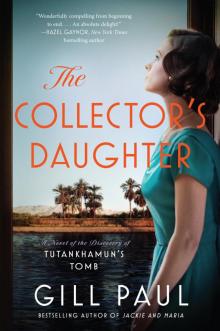 The Collector's Daughter
The Collector's Daughter The Lost Daughter
The Lost Daughter Jackie and Maria
Jackie and Maria The Affair
The Affair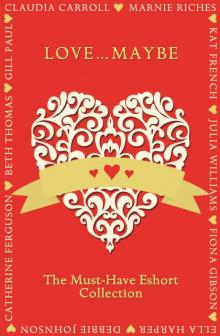 Love...Maybe
Love...Maybe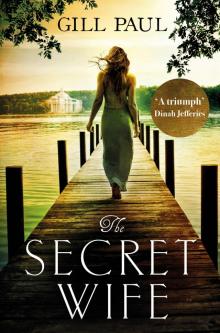 The Secret Wife
The Secret Wife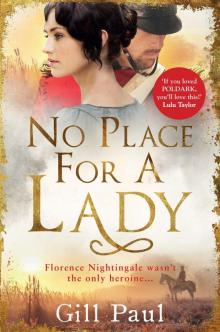 No Place For a Lady
No Place For a Lady Another Woman’s Husband
Another Woman’s Husband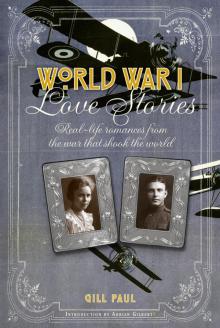 World War I Love Stories
World War I Love Stories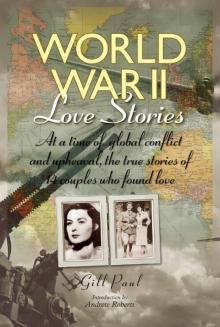 World War II Love Stories
World War II Love Stories